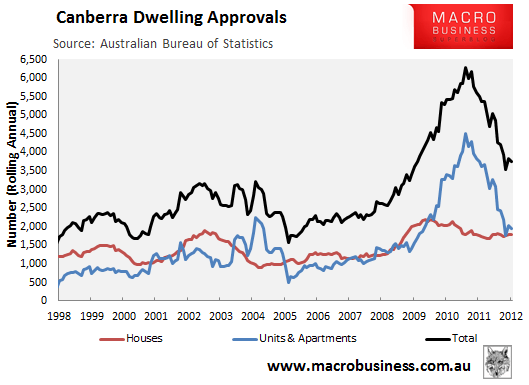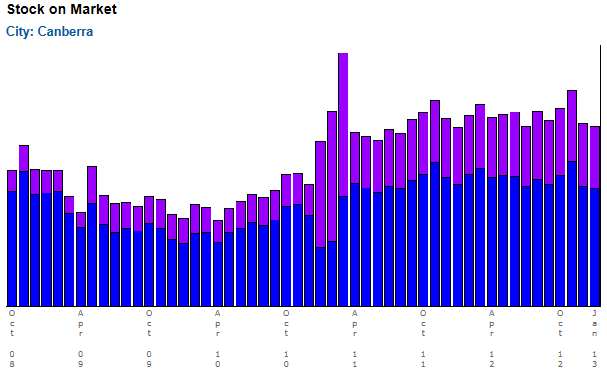
In mid-January 2003, just days before bush fires hit the outlying suburbs, my girlfriend (now wife) and I moved to Canberra from Melbourne so that I could commence work as an economist at the Australian Treasury. Fortunately for us, we had secured rental accommodation in December 2002, so were unaffected by the severe rental squeeze caused by the destruction of around 500 homes in the capital.
The rental market in Canberra was already very tight, and the cost of rent prior to the bush fires was well beyond what could be found in Melbourne. Many others that arrived into the ACT after the bush fires were forced into expensive share accommodation, often located in the far outer suburbs or in regional New South Wales.
Fortunately, the situation facing Canberra renters appears to have eased significantly, brought about by a long-overdue construction boom, particularly in the unit market, that gathered pace in the years following the Global Financial Crisis.
You can see from the next chart that unit approvals went ballistic in the two years to mid-2011 before returning back to normal over the past year or so:

The surge in unit approvals led to a big pick-up in dwelling construction across the ACT, with the annual number of new homes constructed peaking in September 2011 and remaining highly elevated as at September 2012, according to the ABS:

While the boom in dwelling construction has not yet had much impact on Canberra house prices, it does appear to be having a profound impact on the rental market, with SQM Research reporting a large increase in rental vacancies and Australian Property Monitors reporting negative rental growth for Canberra houses and apartments in the year to December 2012 (see below graphics).


Yesterday, the Canberra Times also reported heavy discounting from landlords amid an influx of new developments that has pushed rental supply to 15-year highs:
AN INFLUX of developments has pushed Canberra’s rental market to new levels of supply as anecdotal reports of discounted rents begin to emerge.
The vacancy rate is approximately 3 to 5 per cent, according to Badenoch Real Estate principal Symon Badenoch, who said there were more properties on the rental market now than he had seen in 15 years.
He said traditionally demand had been higher than supply in Canberra, but the market had softened and owners who could not sell had turned to renting…
”You are getting 150 units being completed behind another one – and another one,” he said. ”Suddenly you are getting 1200 properties added to the rental market in one hit if they are not picked up by buyers who want to move in”…
The last review from property adviser Herron Todd White also alluded to rental discounts as more developments throughout Gungahlin, Belconnen and Molonglo add to the supply.
”We are expecting to see a surge in supply of rental properties which could possibly lead to very competitive rental pricing within the market,” it stated.
While Canberra dwelling values have held-up remarkably well – down only -2.6% since peak according to RP Data-Rismark as at January 2013 – it would seem prices are headed for a prolonged period of under performance given the huge surge in construction, rising rental vacancies and falling rents, as well as elevated for sale listings (see next chart).

There is also the risk that the federal government could step-up austerity measures across Canberra, which would reduce public sector employment and recruitment, and reduce demand for housing in the capital. As a point of reference, after the Howard Government was elected in March 1996, and began cutting spending and jobs across public sector agencies, Canberra dwelling values fell by -8% and did not regain their value until March 1999, according to RP Data-Rismark.

